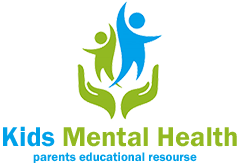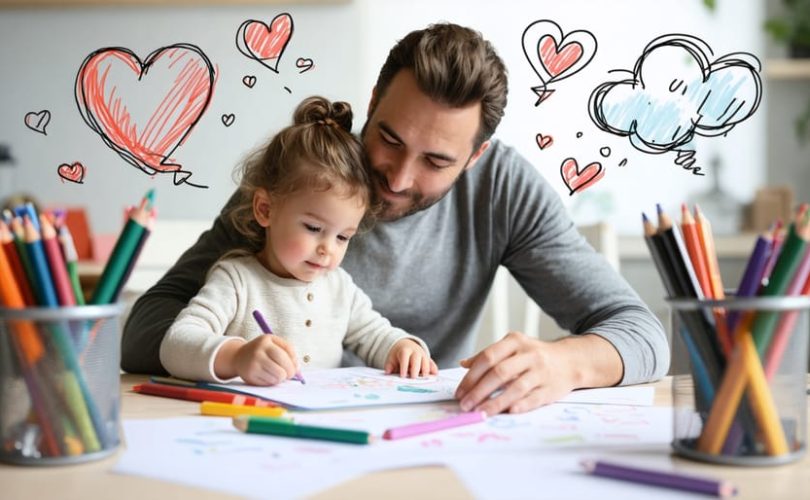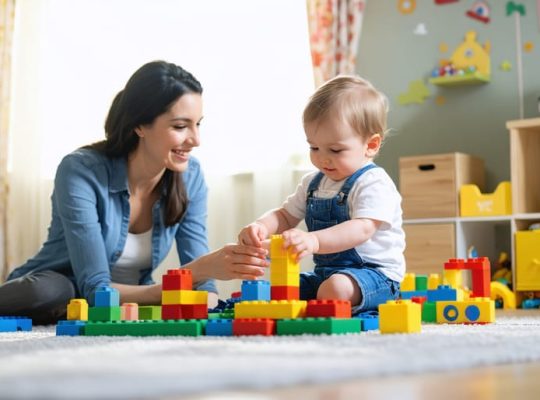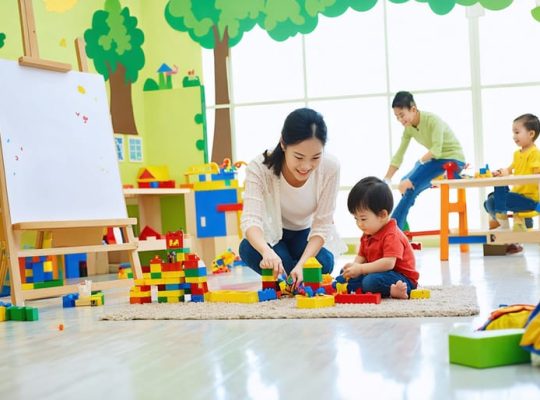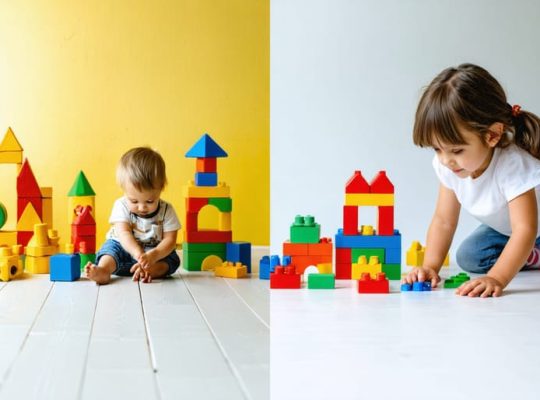Imagine your child is struggling with a challenging situation, and instead of imposing solutions, you sit down together to find answers. This is collaborative problem solving – a powerful approach that transforms conflicts into opportunities for growth and learning. Unlike traditional disciplinary methods, collaborative problem solving recognizes that children do well when they can, and when they can’t, there’s usually a reason worth exploring together.
This compassionate, skills-based approach was pioneered by Dr. Ross Greene and has revolutionized how parents, teachers, and caregivers handle challenging behaviors. At its core, collaborative problem solving builds stronger relationships while teaching crucial life skills that benefit both adults and children. Rather than focusing on rewards and consequences, it emphasizes understanding, empathy, and working together to find solutions that work for everyone involved.
When we collaborate with children to solve problems, we’re not just addressing immediate challenges – we’re teaching them valuable skills they’ll use throughout their lives. We’re showing them that their voice matters, that problems can have multiple solutions, and that working together leads to better outcomes than going it alone. This introduction to collaborative problem solving opens the door to a more peaceful, understanding way of supporting children through their challenges while strengthening the bonds that matter most.
What Makes Problem Solving Collaborative?
The Three Pillars of Collaboration
Successful collaborative problem solving rests on three fundamental pillars that work together to create positive outcomes. The first pillar, empathy, involves truly understanding and acknowledging others’ perspectives and feelings. When parents and children practice empathy, they create a safe space where everyone feels heard and valued.
Communication, the second pillar, goes beyond just talking and listening. It includes using clear, age-appropriate language, maintaining open body language, and asking thoughtful questions. For example, instead of saying “Why did you do that?” try “Help me understand what you were thinking.” This approach encourages honest dialogue and builds trust.
The final pillar, shared decision-making, empowers everyone involved to contribute to the solution. When children participate in decision-making, they develop crucial skills and feel more invested in the outcome. This might look like brainstorming solutions together, weighing pros and cons as a team, or allowing children to choose between appropriate options.
Remember that these pillars support each other – strong communication facilitates empathy, while shared decision-making requires both effective communication and empathetic understanding to succeed.

Moving Beyond Traditional Discipline
Traditional discipline methods often rely on punishment, rewards, and strict authority, which can create a power struggle between parents and children. Collaborative problem solving offers a refreshing alternative that respects both the child’s and parent’s perspectives while building lasting solutions together. Like play-based learning approaches, this method emphasizes engagement and mutual understanding.
Instead of imposing consequences, collaborative problem solving encourages parents to understand the underlying reasons behind challenging behaviors. When we shift from “Why won’t you listen?” to “Help me understand what’s making this difficult,” we open the door to meaningful conversations and lasting change.
Consider Sarah, a mother who struggled with her son’s homework resistance. Rather than enforcing strict study times, she discovered through collaboration that he felt overwhelmed by math problems. Together, they broke tasks into manageable chunks and found learning strategies that worked for him. This approach not only improved his academics but also strengthened their relationship and his problem-solving skills.
This shift from control to collaboration creates a supportive environment where children feel heard and valued, leading to better outcomes for everyone involved.
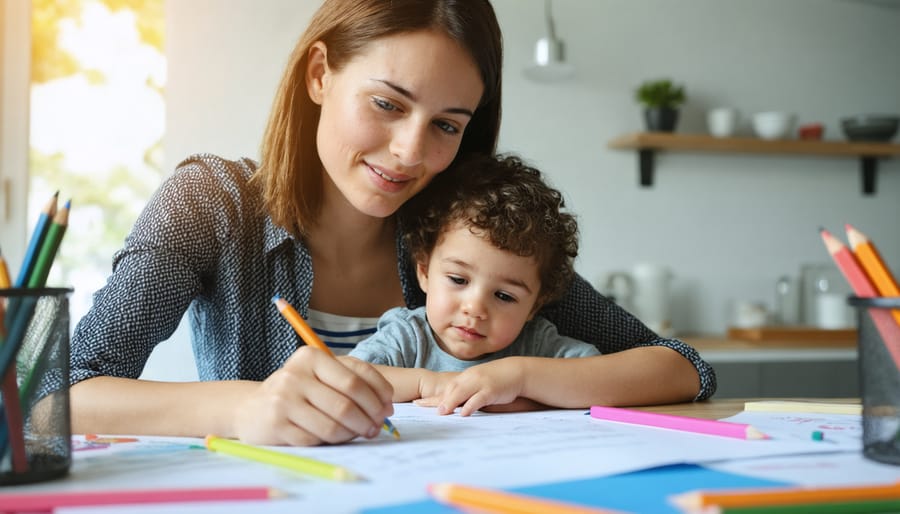
The Benefits for Your Child
Building Emotional Intelligence
Collaborative problem solving creates powerful opportunities for children to develop emotional intelligence naturally through supportive interactions. When children work together with adults to address challenges, they learn to identify and express their feelings in healthy ways. This process helps them understand that emotions are normal and manageable, rather than overwhelming or scary.
Through guided discussions and therapeutic play techniques, children practice recognizing emotional triggers and develop coping strategies. For example, when a child becomes frustrated during a difficult task, the collaborative approach encourages them to pause, name their feelings, and work with their caregiver to find solutions.
This emotional growth happens because collaborative problem solving creates a safe space where children feel heard and validated. When adults respond with empathy and curiosity instead of judgment, children learn to trust their emotional experiences and develop self-awareness. They begin to understand that strong feelings don’t have to lead to challenging behaviors.
Parents often notice that as their children become more emotionally intelligent through this approach, they become better at managing conflicts with siblings, handling disappointments, and expressing needs appropriately. This emotional foundation supports better relationships, improved self-regulation, and stronger mental health throughout childhood and beyond.
Developing Critical Thinking Skills
When children engage in collaborative problem solving, they develop essential cognitive skills that benefit them throughout their lives. Working together to find solutions helps strengthen critical thinking abilities in several important ways.
First, collaboration encourages children to consider multiple perspectives. When working with others, they naturally encounter different viewpoints and approaches to problems. This exposure helps them think more flexibly and understand that there can be many valid solutions to a single challenge.
Dr. Sarah Thompson, a child development specialist, notes that “collaborative problem solving creates an environment where children learn to analyze situations more deeply. They begin to ask better questions and develop more sophisticated reasoning skills.”
The process also enhances children’s ability to evaluate information critically. As they work with peers or adults to solve problems, they learn to distinguish between relevant and irrelevant details, assess the effectiveness of different approaches, and make more informed decisions.
Another valuable benefit is the development of metacognition – thinking about one’s own thinking process. When children explain their reasoning to others or listen to others’ thought processes, they become more aware of how they arrive at conclusions and make decisions.
Through regular collaborative problem solving, children also strengthen their ability to:
– Break down complex problems into manageable parts
– Generate and test hypotheses
– Make connections between different ideas
– Learn from mistakes and adjust strategies accordingly
– Apply learned solutions to new situations
Starting the Collaborative Journey
Creating a Safe Space for Discussion
Creating a safe space for open dialogue is essential to making collaborative problem solving work effectively with your child. When children feel secure and supported, they’re more likely to share their thoughts and feelings honestly, helping to strengthen parent-child bonds strengthen parent-child bonds.
Start by choosing a quiet, comfortable space where you won’t be interrupted. This could be your child’s bedroom, a cozy corner of the living room, or even during a peaceful walk together. The key is ensuring your child feels at ease and understands that this is a judgment-free zone.
Use warm, welcoming body language – maintain gentle eye contact, sit at their level, and keep your posture relaxed. Your tone of voice should be calm and encouraging, even when discussing challenging topics. Remember to validate their feelings with phrases like “I understand why you might feel that way” or “That sounds really frustrating.”
Be patient and give your child time to process their thoughts. Some children need longer to express themselves, and that’s perfectly okay. Avoid rushing or interrupting them, as this can make them feel dismissed or anxious about sharing.
Show genuine curiosity about their perspective by asking open-ended questions. Instead of “Did you have a good day?” try “What was the most interesting thing that happened today?” This approach invites more detailed responses and shows your child that their thoughts and experiences matter to you.
Most importantly, maintain consistency in your responses and always follow through on agreed solutions. This builds trust and shows your child that their input is valued and respected in the problem-solving process.
Finding Solutions Together
The collaborative problem-solving process follows a structured yet flexible approach that encourages positive interaction between adults and children. Let’s break down the steps to finding solutions together:
First, gather all participants and create a safe, calm environment where everyone feels comfortable sharing their thoughts. This might mean finding a quiet space and ensuring there are no immediate time pressures or distractions.
Start by empathetically listening to each person’s perspective about the problem. When working with children, get down to their eye level and use phrases like “Help me understand” or “Tell me more about that.” This shows you value their input and builds trust.
Next, clearly define the problem from all angles. For example, if a child consistently struggles with homework completion, both the parent and child should express their concerns and challenges. The parent might worry about grades, while the child might feel overwhelmed or frustrated.
Once everyone understands the problem, brainstorm solutions together. Encourage creativity and avoid dismissing ideas too quickly. Write down all suggestions, even ones that might seem impractical at first. This inclusivity helps maintain engagement and shows respect for everyone’s contributions.
Evaluate each potential solution by discussing its pros and cons. Help children think through consequences by asking gentle guiding questions like “What might happen if we try this?” or “How would this affect everyone involved?”
Finally, choose a solution together and create a simple plan for implementation. Set clear expectations, decide how to measure success, and agree on when to review progress. Remember that the first solution might not be perfect, and that’s okay – collaborative problem solving is an ongoing process of learning and adjustment.
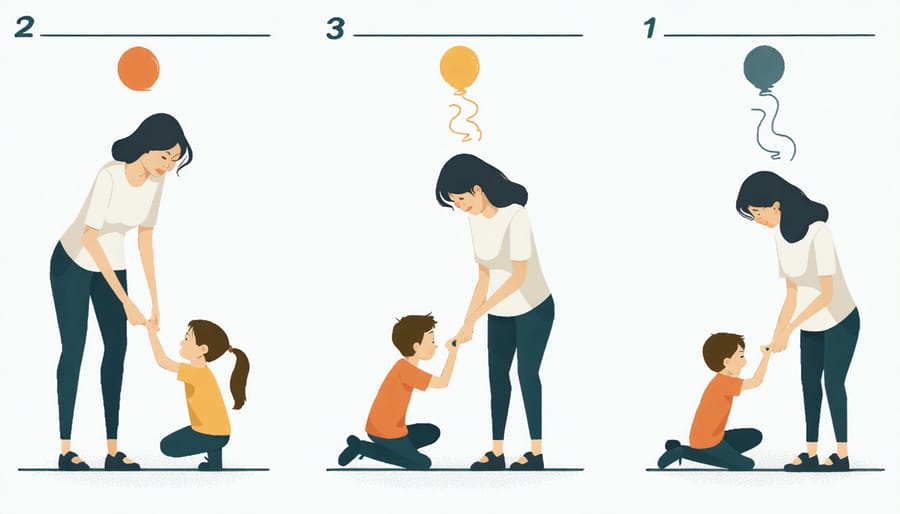
Common Challenges and Solutions
When Emotions Run High
Even in the best collaborative problem-solving situations, emotions can run high, especially when working with children who are still developing their emotional regulation skills. It’s important to recognize that heightened emotions are normal and can actually present opportunities for building emotional connections and deeper understanding.
When you notice tension rising, take a pause. This might mean stepping away for a few minutes, taking deep breaths together, or simply acknowledging the feelings present in the room. Remember that your calm presence can help regulate your child’s emotions.
Use phrases like “I can see this is really frustrating for you” or “Let’s take a moment to calm our bodies before we continue.” This validates feelings while maintaining the collaborative spirit. Sometimes, the most productive problem-solving happens after everyone has had a chance to reset.
Don’t hesitate to reschedule your problem-solving discussion if emotions are too intense. Say something like, “I can tell we both need some time to think about this. Shall we try again after dinner?” This shows respect for everyone’s emotional state while maintaining commitment to finding a solution together.
Staying Patient and Consistent
Remember that implementing collaborative problem solving takes time and patience. It’s natural to feel frustrated when progress seems slow, but consistency is key to long-term success. Think of it as learning a new language together – both you and your child are developing new communication skills.
Start by setting realistic expectations for yourself and your child. There will be good days and challenging ones, and that’s completely normal. When you feel overwhelmed, take a deep breath and remind yourself that every small step forward counts.
Keep a journal to track your progress. Note the successful moments, no matter how small, and reflect on what worked well. This can provide encouragement during difficult times and help you identify patterns in what strategies are most effective for your child.
Consider joining a support group or connecting with other parents practicing collaborative problem solving. Sharing experiences and tips can help you stay motivated and remind you that you’re not alone in this journey.
Remember, your child is also learning and adapting to this new approach. Celebrate their efforts and improvements, even if they’re subtle. Stay committed to the process, and you’ll likely notice positive changes in your relationship and your child’s problem-solving abilities over time.
Collaborative problem solving represents a powerful shift in how we approach behavioral challenges with children. By moving away from traditional reward-and-punishment systems and embracing this empathetic, solution-focused approach, we can build stronger relationships while teaching valuable life skills.
Remember, this journey requires patience and practice. Start small by identifying one challenging situation and working through it together with your child. Listen to understand their perspective, share your concerns clearly, and brainstorm solutions as equal partners. You may be surprised by their creative ideas and insights.
The benefits of collaborative problem solving extend far beyond resolving immediate conflicts. You’re helping your child develop crucial skills in communication, empathy, critical thinking, and emotional regulation. These skills will serve them well throughout their lives, from the playground to the classroom and eventually the workplace.
Don’t be discouraged if the process feels challenging at first. Like any new skill, collaborative problem solving takes time to master. Celebrate small successes, learn from setbacks, and keep the lines of communication open. Remember that you’re not just solving problems – you’re building trust, understanding, and a more positive relationship with your child.
Take the first step today. Choose a calm moment to start a conversation with your child about a recent challenge. Your journey toward more effective, compassionate problem solving begins with that single conversation.
